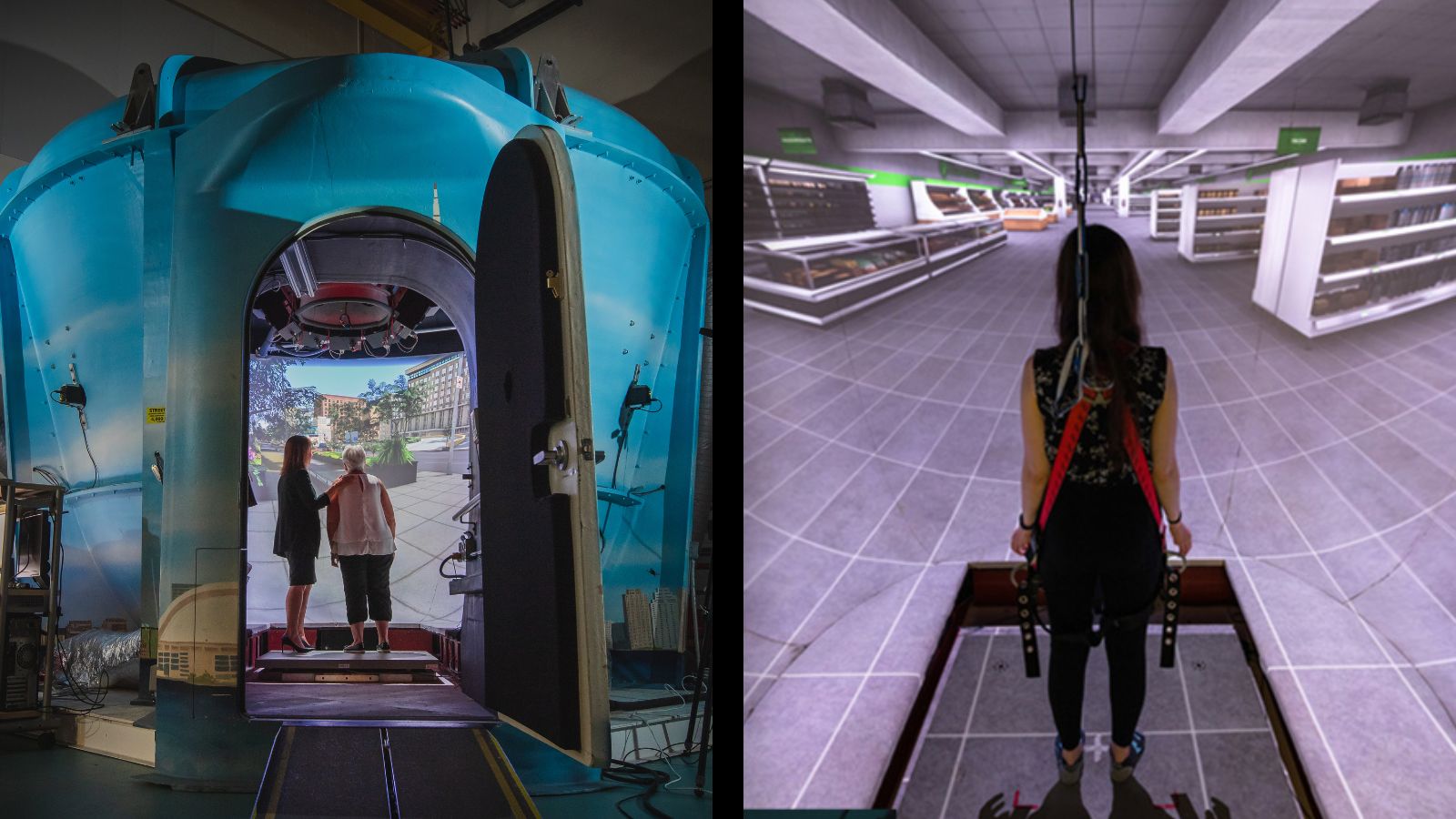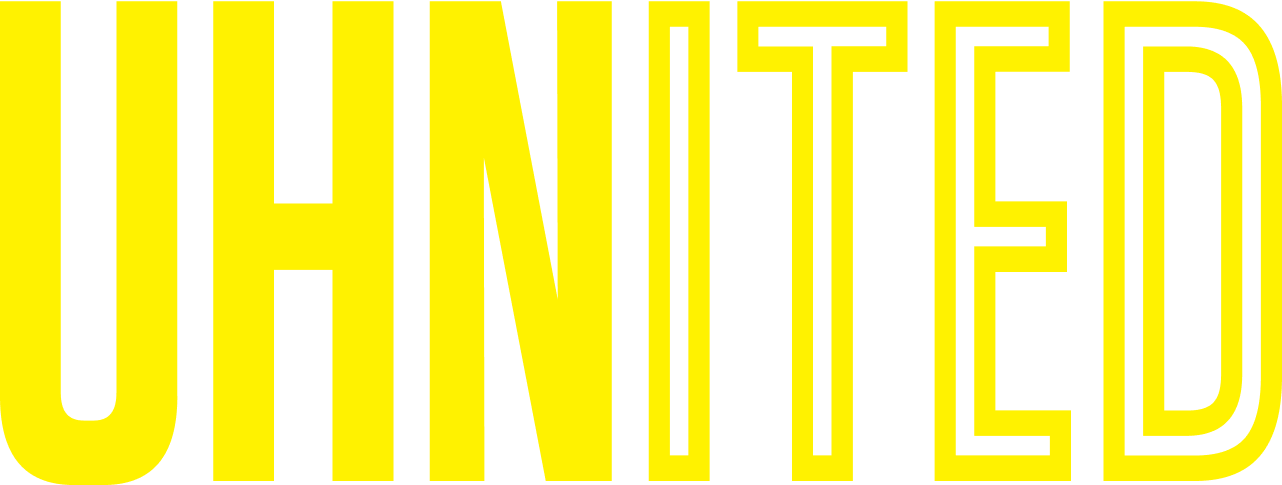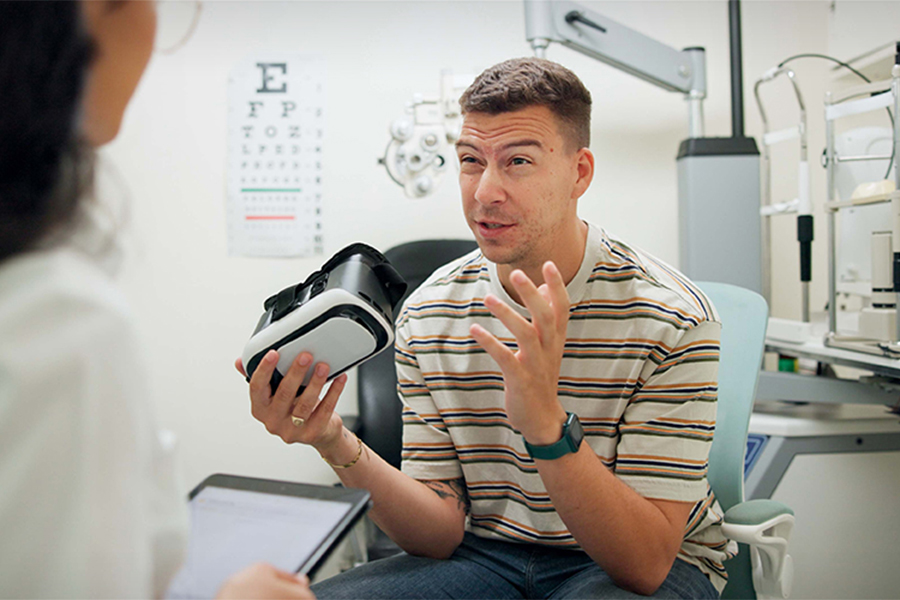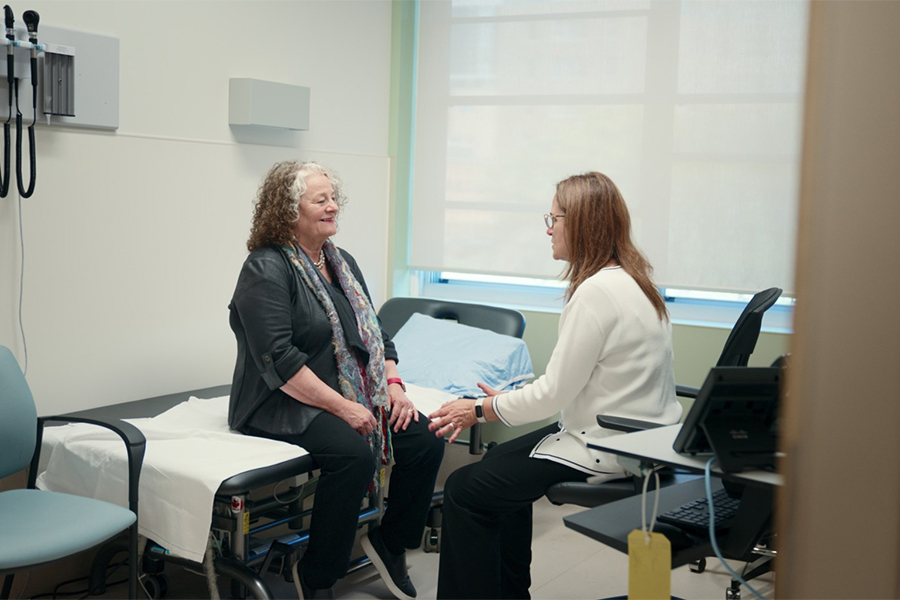
In a recent study, scientists at UHN’s KITE Research Institute found that individuals with concussions are at a higher risk of experiencing visually-induced motion sickness.
This finding has important implications for the use of virtual reality in the assessment and rehabilitation of concussions.
Concussions, a common type of mild traumatic brain injury, can lead to a range of symptoms including balance problems, memory impairments, dizziness and headaches.
Research suggests that individuals with concussions rely more heavily on visual cues due to impairments in their balance and sensory integration systems. This increased dependence on visual cues can make individuals more prone to visually-induced motion sickness (VIMS).
Virtual reality has become a popular method for assessing and rehabilitating concussions due to its immersive and controlled environments, which can visually simulate real-world scenarios for therapeutic purposes. However, the increased risk of VIMS among individuals with concussions highlights the importance of careful design and use of virtual reality in treating concussions.
Drs. Behrang Keshavarz and Jennifer Campos, Senior Scientists at KITE, led a team of researchers to investigate the effect of concussions on VIMS when exposed to virtual reality environments.

The research team exposed 31 participants, including 16 individuals with concussions and 15 healthy individuals, to a virtual reality scene simulating motion through a grocery store aisle at varying speeds.
Individuals with concussions were found to experience more severe VIMS compared to healthy individuals, suggesting that the presence of concussion symptoms notably increases the risk and severity of VIMS.
“These findings underscore the importance of meticulously evaluating visual stimulation in concussion management,” the researchers explain. “Understanding the link between concussion symptoms and VIMS can help develop better strategies for employing virtual reality in concussion rehabilitation without exacerbating VIMS.
“Importantly, virtual reality could be effectively implemented in the rehabilitation of visually-induced symptoms during concussion.”
As virtual reality technology becomes more prevalent in clinical settings, ensuring that it is safe and effective for use in vulnerable populations, such as individuals with a concussion, remains a priority.
These insights offer a valuable foundation for further exploration into optimizing virtual reality-based interventions, ultimately improving recovery experiences for concussion patients.
This study was supported by generous donors to UHN Foundation.
Your support is fundamental to us as we push the status quo of health care. Support research at Toronto Rehab by joining Rally for Rehab, presented by BMO, a fundraising event, centred around an accessible walk on September 8!

No one ever changed the world on their own but when the bright minds at UHN work together with donors we can redefine the world of health care together.


